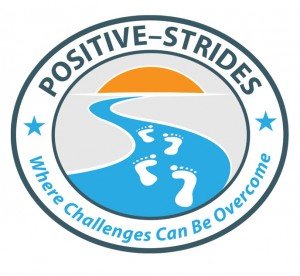+ By Patty Speakman Hamsher + Photos by Alison Harbaugh
Youth sports have shaped the lives of many of us, teaching perseverance and cooperation as well as providing lifelong skills and tools to tap into our own grit and determination. Whether on the field, in the pool, or on the court, young athletes learn tangible lessons of camaraderie, character, heartbreak, and triumph that shape their lives.
Sometimes, promotion and competition in sports also include pitfalls and injuries along the way. While a typical injury list from years of athletics may only include a black eye, shin splints, and a sprained ankle, many athletes fare far worse. And they often go through the suffering and recovery experience alone, with much higher stakes.
 Ryan Brant, a former lacrosse player from Annapolis, knows the pain of sports injuries. Recruited to play Division I lacrosse for Ohio State University, Brant suffered injuries that led to several surgeries in his freshman year; eventually, he had to give up the sport that he had spent much of his life playing. This left a void that he did not know how to fill, at first. He became depressed and found himself searching for a support group. His family and doctors provided invaluable assistance and reassurance, but what he sought was the mentorship and experience of another athlete.
Ryan Brant, a former lacrosse player from Annapolis, knows the pain of sports injuries. Recruited to play Division I lacrosse for Ohio State University, Brant suffered injuries that led to several surgeries in his freshman year; eventually, he had to give up the sport that he had spent much of his life playing. This left a void that he did not know how to fill, at first. He became depressed and found himself searching for a support group. His family and doctors provided invaluable assistance and reassurance, but what he sought was the mentorship and experience of another athlete.
This propelled Brant to establish a nonprofit organization in his hometown that would provide mental, physical, and financial support to young athletes suffering life-changing injuries. Now in its second year of operation, Positive-Strides.org has served more than 45 athletes, linking them with people and places where they can find best practices to overcome and recover from injuries.
The organization has worked with top athletes from the National Football League and collegiate players. Though its efforts are concentrated in Maryland-Washington, DC-Virgina areas now, it has reached out to athletes in Louisiana and South Carolina as well.
Courtney Sprissler was an elite field hockey player who was bound for an exciting career in Division I collegiate play. In high school, she suffered seven concussions, which took her out of playing during her senior year. She continued playing at the club level, and earned invitations to four colleges.
Weeks before her collegiate preseason began, Sprissler got word that her head injuries—including three suffered during her senior year—had precluded her from being cleared by a physician to play collegiate field hockey. She had to give up a full scholarship and her dreams to play Division I sports.
“Everything I had worked for got shut down in the blink of an eye,” Sprissler says, admitting that athletics had always been her life’s focus. Like Brant, Sprissler went through a dark phase of depression while dealing with the pain and immobilization from frequent, blinding headaches and sleeplessness—aftershocks of the concussions.
 Two years and two unsuccessful surgeries later, Sprissler met Brant. They bonded over shared stories of athletic injuries and depression. Positive-Strides.org was instrumental in helping Sprissler get her life back. She receives regular neurofeedback treatments, a noninvasive treatment that sends electronic pulses through the brain to break up and rid the body of the chemical that is created each time a body suffers a concussion.
Two years and two unsuccessful surgeries later, Sprissler met Brant. They bonded over shared stories of athletic injuries and depression. Positive-Strides.org was instrumental in helping Sprissler get her life back. She receives regular neurofeedback treatments, a noninvasive treatment that sends electronic pulses through the brain to break up and rid the body of the chemical that is created each time a body suffers a concussion.
Sprissler says she can now sleep longer at night, and the headache pain is not as severe or frequent. Memory impairment is still present, but connecting with the Positive-Strides family of support has greatly improved her outlook on life and given her hope.
Positive-Strides.org works hard to spread the word about services it can provide to young injured athletes. The organization is determined to be what Brant once sought out, and is also committed to being an advocate for injury prevention in youth sports, raising awareness of the growing epidemic of youth sports injuries.
Brant and his team talk with parents, coaches, athletes, and school administrators as often as possible about ways to prevent injuries, and signs and symptoms to keep an eye out for, on the field and at home. The message simply points out the big picture: there is life beyond athletics, and it is not always worthwhile to get back in the game too early.
Looking back over all of his injuries, and the pain and frustration they have caused, Brant says, “It’s helped me become a role model, but it has taught me great lessons in overcoming adversity, perseverance, and being a teammate.” His team now runs along the sidelines, encouraging athletes everywhere to make positive strides towards a healthier life. █










